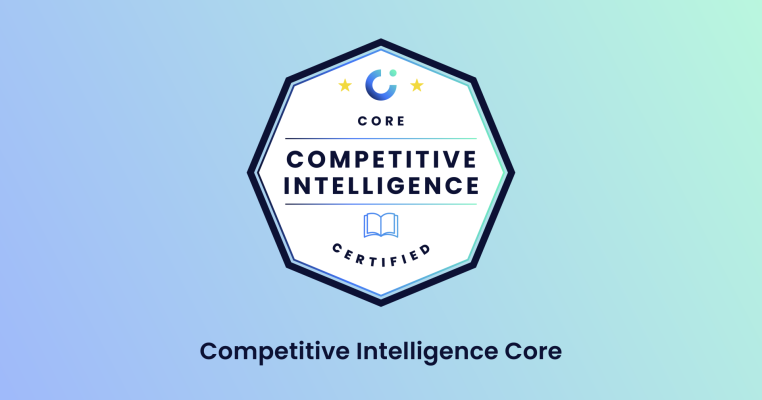Business strategies are high stakes. There’s money on the line, and mistakes matter.
That’s why pressure testing your business strategy is key.
In this article, we’ll explain what business wargaming is, and how you can use it to test and improve your business’ strategies and tactics.
What is a war game in business strategy?
Business wargaming (aka corporate war gaming) sees you battle test your strategic plans via role play before putting the fate of your business in their hands.
To test your strategies, you’ll form a group, split into teams, and throw various scenarios at your strategy. These scenarios tend to involve changes to large-scale macro factors, like those examined in a PESTLE analysis.
Teams will simulate moves and counter moves in response to these scenarios, based on the strategy you’re using, to play out the war game scenario. This simulates how your business would cope under dynamic (and often challenging) market conditions.
Those with greater budgets can even incorporate computer simulations of events and scenarios to try to glean the most out of them.
Types of war game
There tend to be two types of business war games: strategic war games, and tactical ones.
Strategic war games are relatively all-encompassing, and take a comprehensive look at your overarching strategy.
Tactical business wargames are smaller in scope than strategic ones. When you want to test a few different tactical approaches to one or two specific problems or questions you have, tactical games make the most sense.

War gaming benefits
Here are a few reasons you should run a business war game workshop.
It:
- Encourages cross-departmental communication.
- Allows you to pressure test ideas.
- Can spark creativity.
- Challenges the status quo.
- Creates buy-in for your final plan.
• Encourage cross-departmental communication
When departments don’t communicate, grievances can build up over time. 😤
Encouraging semi-structured interaction between members of these teams who wouldn’t usually interact is always positive. It helps break down barriers, and encourages communication.
• Pressure test ideas
The idea of wargaming is to purposely seek out blind spots and weaknesses in your strategy in a low-stakes environment. (As well as to validate its positives).
This way, you can rectify weaknesses and bolster your overall business strategy against the real threats of your competitive environment.
• Spark creativity
Done right, role-playing is fun. 🕹️
Combining the competitiveness of opposing teams with the gamification of the strategy pressure testing process, and representation from all corners of the business, makes a war game workshop a melting pot of creativity.
As a result, you’ll uncover creative, innovative new solutions to potential obstacles.
• Challenge the status quo
For any business, but especially large organizations with well-established processes, preconceived notions of the “right” way of doing things can go unchallenged for too long.
This leads to stagnation and blind spots – two things a war game workshop is adept at identifying and eliminating.
Workshops also give diverse voices from across the business a chance to be heard. Any business that wants to stay competitive must challenge preconceived ideas, not least to ensure it doesn’t get blindsided by Black Swan events and unforeseen circumstances.
• Create buy-in on new business strategies and plans
When people from across the business have been involved with the creation of your business strategy, they’ll naturally be more invested in it. 🤝
This nets you advocates, and buy-in for your strategy across all departments.
So, not only does business wargaming improve your final strategy, it should also improve your business’ ability to implement that strategy by getting reps emotionally invested in its outcome.
How to set up, structure, and perform a war game workshop
War game workshops tend to occur in three stages:
Let’s dig into each one in detail.
Stage 1: The planning stage
For large businesses, war game workshops can be big affairs. For these businesses, some organization will be necessary to make the most of the event.
But even smaller businesses should spend some time prepping. Answers to the following questions, at least, should be figured out during the planning stage:
- Who should attend the workshop?
- Where will you hold it? (Virtual workshops will have their own logistical challenges).
- What are the objectives for the workshop?
With these questions answered, you’ll be ready to move on to the briefing stage.
Stage 2: The briefing stage
Here’s where you’ll create any pre-reading material your workshop participants will need to get up to speed before the workshop begins, and share them with the attendees.
This material aims to give workshop attendees a rundown of everything they need to know to participate. 🙋
They can get up to speed in their own time, so the workshop can hit the ground running once everyone arrives.
To be clear, during this stage you will:
- Prepare the necessary pre-reading / briefing materials.
- Distribute these materials to attendees.
- Follow up with attendees to make sure they’ve had a chance to familiarize themselves with the materials, and also to field any questions that may arise before the workshop.
Stage 3: The role-playing stage
Here’s where you’ll engage in the actual business wargaming workshop itself.
Creating the teams
Generally, attendees split into teams.
One team represents the ‘home’ organization (like the home team in a football match). 🏈
Two or more teams can represent various competitor players.
But not every team needs to play opposing sides.
It’s often useful for at least one team to serve the function of a governmental, or legislative organization with regulatory authority.
Other good options include:
- Consumer groups and particular segments of your target market.
- Distributors.
- Suppliers.
- Regulatory bodies.
Possibilities for teams role playing competitors
Your competitor teams can be closely (or loosely) based on real competitors. Or they can be based on fictional, or even idealized versions of competitors that emphasize particular competitive challenges.
If you’re limited on teams, and not so limited on competitors, a final option is to combine real-world competitors. Do this for competitors that share similar attributes, and pose a similar threat level to your business, combining them into a single entity to make things more manageable.
Take turns to make strategic moves
To begin, your home team and competitor teams will take turns making strategic moves and counter-moves. ♟️
After each turn, the consumer group, or ‘market team’, awards a portion of the market share to one of the competing groups.
The regulatory, or ‘control’ group, goes last each turn, and opens up a dialogue about how things worked, and how external macro factors could have played a part. The control group can also change the rules to impact the dynamics of the war game.
How is a war game different from strategic planning?
War gaming is a means of pressure testing and improving your strategic plans.
It’s dynamic, and the role-play itself tests your plans under changing conditions your business might not be familiar with.
Your control group team can change the rules – they might restrict unfair advantages, or new social factors might limit the viability of certain strategies.
The competitive nature of war gaming gets teams thinking creatively as different teams try to actively poke holes in your plan. At the end, you’ll have a far better understanding of the strengths and weaknesses of your strategic plan.

Possible scenarios to role-play
In your scenario planning, consider role-playing the following scenarios to best pressure test your business strategy.
- Product launches.
- Legislative changes.
- Competitor mergers and acquisitions.
- The impact of environmental disasters.
- Outbreak of war.
- Emergence of disruptive new technologies.
- Weakening or strengthening of currencies.
• Product launches
It perhaps makes most sense to start by testing something specific you’re planning on doing.
A strategic plan doesn’t have to be all-encompassing, after all. You can develop a go-to-market strategy for a new product, and want to pressure test it.
War gaming comes into its own in such scenarios, allowing for tighter, more focused role-plays that examine particular business events.
• Legislative changes
Legislative changes are some of the easiest, most interesting, and most easily understood scenarios your control group can throw out to other teams in your war game role-play.
Lawmakers and legislators exist, in part, to prevent monopolies. If one side gains a clear competitive advantage during your role play, your control group can step in to dampen that advantage.
How your own business adapts to such rule changes is a key factor in strategic planning, so it pays to simulate them.
• Competitor mergers and acquisitions
Facing off against a number of competitors can feel daunting enough.
But what about when multiple competitors join forces?
Mergers and acquisitions make for a turbulent competitive landscape. If those at the helm don’t handle the transition well, both companies can end up worse off.
But when they go right, you get a new formidable opponent that’s greater than the sum of its parts. ➕
Devising tactics and strategies for when competitors join forces is never a bad idea.
• Environmental disasters
Environmental disasters can damage key infrastructure, and lead to political and economic unrest. In the wake of such disasters, legislators can perform emergency changes to national budgets, maneuvering money out of industries quickly.
Such changes could have knock-on effects for your business.
Pressure testing your plans against such changes is necessary if you’re to have the greatest possible confidence in those plans.
• Outbreak of war
When wars break out, things change.
Border controls get tighter for affected countries. Imports and exports can be restricted or shut down. Tourism grinds to a halt, and for some regions and countries, this can have a hugely negative economic impact.
Disruptive scenarios like these can be opportunities for some. Supply chain issues give those with deeper pockets a chance to stockpile greater volumes of goods, limiting supply to manipulate prices.
Smaller players without the same financial freedoms get squeezed, and can go out of business. They’ll need to get creative if they want to continue being first choice for their customers.
• Emergence of disruptive new technologies
Right now, everyone is witnessing in real time how artificial intelligence (AI) is impacting industries. 👾
New and emerging technologies have the power to disrupt and change the ways we work.
But this is difficult to simulate. Part of the reason new tech is so disruptive is it’s so difficult to predict what it’ll be, when it’ll come into existence, and how rapidly it’ll exert influence.
At the very least, role-playing the impact of technological change is wise.
• Weakening or strengthening currencies
A change in the strength of any currency that’s involved in your regular business operations will have knock-on consequences for your business.
If you source materials from suppliers in Europe, the EUR/USD exchange rate becomes important for your bottom line. 🏦
Other economic factors can influence exchange rates, so a stronger or weaker rate can be a critical secondary consequence of some other factor that you’ll want to pay attention to, since it can heavily influence your final profit margins.
Trying to model or predict changes in foreign exchange rates is more or less pointless. Massive teams of very smart people are paid enormous sums of money in their attempts to do this in financial institutions. Instead, create contingencies for the possible consequences of various changes in exchange rates.
Is the war metaphor right for competitive scenarios?
Alex McDonnell’s dance battle analogy
A debate you frequently hear come up is whether the whole ‘war’ metaphor is really fitting for competitive scenarios.
Alex McDonnell, Director of Product Marketing at Airtable, prefers his much-loved ‘dance battle’ analogy. 🕺
In a dance battle, the opposing sides don’t try to tear each other down. Instead, with mutual respect, they watch each other’s moves and continually try to outdo each other. With one key aim in mind: to please the audience. The same, argues McDonnell, should be the case for competing businesses.

In a war, there is no audience. There is no target market. There is no customer. There’s just the goal of winning against the enemy.
This way of thinking lends itself to the “competitor-obsessed” frame of competitive intelligence, which is often looked down upon.
The counterargument
“You might want to dance with your competitors, but if they’re out for blood, and are willing to get their hands dirty, you better be willing to step up to the plate and fight back.”
Okay, but if business is just… well, business, then competitors aren’t enemies.
Any good business leader knows competition makes for better products. Competition benefits the consumer, and when businesses get their market strategies (and competitive positioning) right, there’s plenty of room for them to co-exist profitably.
TL;DR
So, what have we learned?
💡 Business wargaming tests your strategic plans through role-play, simulating market conditions to identify their strengths and weaknesses.
🛠️ Distinguish between strategic wargames for overarching strategies and tactical ones for specific issues.
🤝 Wargaming fosters communication across teams, bringing diverse insights and strengthening strategies.
🎭 Organize your wargame in three stages: planning, briefing, and role-playing, to ensure a comprehensive test of your strategies.
🌍 Role-play scenarios like product launches, competitor mergers, legislative changes, environmental disasters, and currency fluctuations to robustly test and refine business strategies against real-world challenges.
Give yourself an unfair advantage
Our newest competitive intelligence course lifts the lid on the frameworks and processes experts use to deliver impactful intel with confidence.
You can expect:
- A 100% self-paced and online course packed with competitive wisdom so you can stop worrying and start winning.
- Bonus features from established competitive professionals to give you an unfair advantage.
- 6 downloadable, customizable templates and frameworks that make analysis a cinch.

Competitive Intelligence: Core
We'll show you how to:
- 👑 Lead development of your org’s all-important competitive positioning.
- 🦾 Master CI’s essentials, including its most powerful research techniques.
- 🚀 Arm sales and customer success with intel to skyrocket win rates and turn down churn.
- 🧠 Offer leaders critical intel that informs their decision-making and strategy.
- 📈 Elevate CI’s role within your org to ensure career progression.





.png?v=09cf73b4b5)